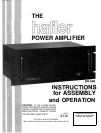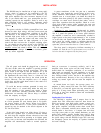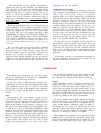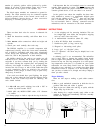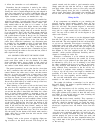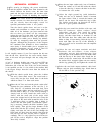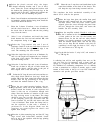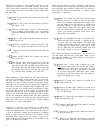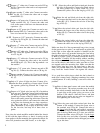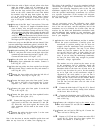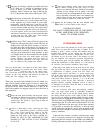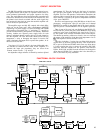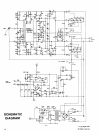INTRODUCTION
The Hafler DH-500 is a two channel audio power
amplifier designed to the very highest performance stan-
dards. It is available as a kit, or factory assembled. Its
power rating of 255 watts per channel is very conservative,
and it can deliver appreciably higher powers into impe-
dances below the rated 8 ohms. You must be very cautious
in the application of this amplifier, as its output capability
is more than most speakers can safely tolerate. We urge
you to read the “Operation” section of this manual so your
speakers will be reasonably protected. The best protection
is still common sense in choosing program levels which
your speakers can tolerate.
The DH-500 combines power MOSFET technology
with a uniquely simple and effective circuit which reduces
all types of distortion at all power outputs, over the entire
audio spectrum, to levels where the finest test equipment
has great difficulty in measuring it. The DH-500 sets a new
high in reliability and resistance to abusive operating con-
ditions at such high powers. This is one of the direct ben-
efits of the power
MOSFET’s
ability to current limit under
abnormal conditions.
Where the conventional bipolar transistor must be pro-
tected by special circuits from entering “thermal runa-
way” when it gets hot due to heavy signals, tending to get
even hotter, the MOSFET self-corrects to reduce the cur-
rent, and thus the heat under the same conditions. You
thus gain the dual advantages of simpler circuitry and the
elimination of one of the chief causes for distorted signals
imposed on the music-the sound of the actuation of com-
plex protective circuits.
The speed-measured as the slew rate-of the DH-500
delivers unmatched transient linearity, revealing the most
delicate nuances of the music. In refining the basic Hafler
MOSFET circuit the overall open loop gain was reduced
by using more local feedback in the input stage. This re-
quired less compensation to stabilize the circuit, with the
result that it was faster overall. With the built in bandwidth
limitation at the input, all other stages are free
of any
trans-
ient overload.
The fully complementary, symmetrical push-pull circuit
is direct coupled throughout (except at the input). It uses
all silicon discrete devices in a format which is directly re-
lated to the acclaimed Hafler preamplifier circuit. With its
unconditional stability into virtually any load, and its
enormous power capability, the result is complete freedom
from listening fatigue. The longer you listen to this re-
markable amplifier, the more certain you will be that you
could not have made a better choice.
While modest in cost, through the elimination of frills
and gadgetry, the quality is evident not only in the sound,
but in the conservatively rated components. The over-
sized power transformer, the conservative operating levels
of the
MOSFETs,
the computer-grade
electrolytics
total-
ling 40,000 microfarads, the enclosed relay, the use of film
capacitors in signal circuits-all are evidence of the design
efforts to achieve exceptional reliability simultaneo’usly
with state of the art
sonics
and specifications. So rugged is
the DH-500 that it can deliver over 20 amperes into a short
circuit!
For those with special power needs, the DH-500 can be
adapted to monophonic operation, delivering in excess of
800 watts into 8 ohms, by installing the DH-502 input
bridging kit.
Those who have chosen to build this amplifier from the
kit will find the assembly instructions assume no technical
ability other than how to make a good solder connection.
Even that has been described for those who are new to the
fun of kit building. Through pre-assembly and testing of
the complete signal module, the performance of the kit has
already been assured, for assembly involves little more
than interconnection of the power supply and control ele-
ments. You can look forward to just a few hours of con-
struction fun, to hear the finest audio amplifier yet pro-
duced.
CONTENTS
installation
.........................
.Page 4
Operation
...............................
.4
Connections
............................
.5
Assembly Instructions
....................
.6
If Problems Arise
.......................
.I4
Circuit Description
......................
.I5
Schematic Diagram
.....................
.16
Component Values
.....................
.17
AC Line Connections for
Overseas
Use
...
.I8
Kit Parts List
............................
.I9
Service and Warranty
...................
.20
Pictorial Diagram
....................
.Insert
3



